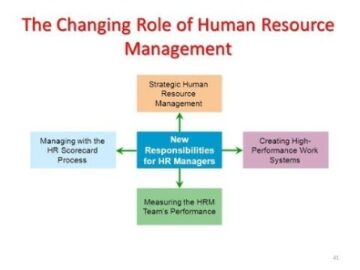Gross Profit Margin: Formula and What It Tells You
This ratio helps measure the company’s efficiency to arrive at a profit after the production and sales process. A higher ratio indicates that the company is producing more efficiently. In simple words, it indicates that the company has efficient management, low-cost production, and increased sales price.
Sysco Earnings: Macro Headwinds Limit Near-Term Margin … – Morningstar
Sysco Earnings: Macro Headwinds Limit Near-Term Margin ….
Posted: Wed, 02 Aug 2023 22:04:13 GMT [source]
However, a portion of the fixed costs may be assigned under absorption costing, which is needed for external reporting in the generally accepted accounting principles (GAAP). Fixed costs might include rent of production building, advertising, and office supplies. Monica owns a clothing business that designs and manufactures high-end clothing for children. She has several different lines of clothing and has proven to be one of the most successful brands in her space. Here’s what appears on Monica’s income statement at the end of the year.
The ratio is a great indicator of the organizations ability to absorb non-product related operational expenses. The larger the GPR, the more gross profit the organization has to fund operations. Apart from using this formula, you can also use a gross profit ratio calculator to determine a company’s profitability ratio. Return on equity (ROE) – expresses the percentage of net income relative to stockholders’ equity, or the rate of return on the money that equity investors have put into the business.
What are Profitability Ratios?
Click on any of the CFI resources listed below to learn more about profit margins, revenues, and financial analysis. This means that for every dollar generated, $0.3826 would go into the cost of goods sold, while the remaining $0.6174 could be used to pay back expenses, taxes, etc. The ratio indicates the percentage of each dollar of revenue that the company retains as gross profit. It results from the difference between net sales and cost of goods sold
without taking into account expenses generally charged to the profit and loss
account. Just upload your form 16, claim your deductions and get your acknowledgment number online.
- The gross profit ratio helps to ascertain optimum selling prices and improve the efficiency of trading activities.
- The excess money can be used to pay off other operating expenses, such as selling, general & administrative, marketing, and interest expenses.
- Each company uses a range of metrics to analyse its financial statements.
- Gross profit margin provides a general indication of a company’s profitability, but it is not a precise measurement.
- In other words, it helps in computing how much of every dollar of revenue is left post deduction of all the direct cost of production (also known as the cost of sales or cost of goods sold).
The cost of goods sold considers only the company’s direct costs, not indirect costs. The direct costs are variable as they change with the quantity of production. As an investor, you’ll need to look at some key financial metrics so you can make well-informed decisions about the companies you add to your portfolio.
Price Increase
A profit margin is a percentage that expresses the amount a company earns per dollar of sales. According to the latest annual report, the company registered net sales of $265,595 million, while the year’s sales cost stood at $163,756 million. That is why it is almost always listed on front page of the income statement in one form or another.
The gross profit ratio only shows the profitability of a business, not its liquidity or cash position. Also, it doesn’t consider other expenses that are necessary for running the company’s operations. Both components of the formula (i.e., gross profit and net sales) are usually available from the trading and profit and loss account or income statement of the company.
But if we compare the ratios between McDonald’s and Wendy’s (two companies operating in the fast-food industry), then we can get an idea of which company enjoys the most cost-efficient production. While profitability ratios are a great place to start when performing financial analysis, their main shortcoming is that none of them take the whole picture into account. They show how well a company utilizes its assets to produce profit and value to shareholders. A company’s operating profit margin or operating profit indicates how much profit it generates under its core operations by accounting for all operating expenses.
Gross Profit Margin vs. Net Profit Margin: An Overview
COGS, as used in the gross profit calculation, mainly includes variable costs, which are the costs that fluctuate depending on the output of production. COGS, also referred to as “cost of revenue” or “cost of sales”, refers to the direct costs involved in creating a product. Revenue is the total value of income generated from sales for a particular period. It is sometimes listed as net sales since it may exclude discounts and deductions from returned or damaged goods. For the fiscal year ending Sept. 24, 2022, Apple reported total sales or revenue of $394 billion and COGS of $224 billion as shown from the company’s consolidated statement of operations below.
Gross profit also allows you to understand the costs needed to generate revenue. For example, let us consider Tesla’s gross profit reported in their consolidated statement of operations for the quarter ending on September 30, 2021. Gross Profit Margin Ratio is a yardstick for measuring how a company makes a profit from its products and services. Therefore, Walmart Inc. managed a human resources and organizational management of 24.68% during the year 2018.
- Gross profit is defined as the difference between the net sales and the cost of goods sold (i.e., the direct cost of sales).
- Both metrics are derived from a company’s income statement and share similarities but show profitability in a different way.
- There may be a slight difference between competing goods and services available in the market.
- Also, it helps to evaluate how efficiently the company is using its labour and raw materials during the production process.
- It is important to note the difference between gross profit margin and gross profit.
However, care must be taken when increasing prices, as this may decrease demand and revenue. A company may also use labor-saving technologies and outsource to reduce the COGS. However, always be mindful of the quality of the materials when purchasing them at a cheaper price.
Would you prefer to work with a financial professional remotely or in-person?
Start by reviewing the gross profit margin of businesses you may find interesting. You can calculate this by subtracting the cost of goods sold from a company’s revenue—both are figures you can find on the income statement. But be sure to compare the margins of companies that are in the same industry as the variables are similar.

The gross profit margin reflects how successful a company’s executive management team is in generating revenue, considering the costs involved in producing its products and services. In short, the higher the number, the more efficient management is in generating profit for every dollar of the cost involved. Gross profit margin is the first of the three major profitability ratios. Net profit margin gives a more comprehensive picture of a company’s overall profitability as it also includes operating expenses, whereas gross profit margin does not. It is wise to compare the margins of companies within the same industry and over multiple periods to get a sense of any trends. Net profitability is an important distinction since increases in revenue do not necessarily translate into increased profitability.
Suppose, Reliance has a cost of goods sold worth Rs.45 lakh and net sales of Rs.85 lakh. Depending on your business, either one of these measures—or even both—could dramatically improve your gross profit margin. But with either course, you must weigh your options carefully before taking decisive action. The two figures that are needed to calculate the gross profit ratio are the net sales and the gross profit. Variable costs can be decreased by efficiently decreasing the costs of the goods, such as cost of raw materials, or cost of production of goods. A company might have low gross profit because it has high production costs.
The ROE ratio is one that is particularly watched by stock analysts and investors. A favorably high ROE ratio is often cited as a reason to purchase a company’s stock. Companies with a high return on equity are usually more capable of generating cash internally, and therefore less dependent on debt financing. Most companies refer to profitability ratios when analyzing business productivity, by comparing income to sales, assets, and equity. The percentage of gross profit achieved by a company in relation to its total sales.
Kraft Heinz Reports Second Quarter 2023 Results – The Kraft Heinz Company
Kraft Heinz Reports Second Quarter 2023 Results.
Posted: Wed, 02 Aug 2023 11:00:00 GMT [source]
On the other hand, net income is useful when determining whether a company makes money when taking into account administrative costs, rent, insurance, and taxes. Subtracting $10,097,000 from $13,757,000 yields a gross profit for the company of $3,660,000. It typically includes direct material cost, direct labor cost, and direct factory overhead. Growth companies might have a higher profit margin than retail companies, but retailers make up for their lower profit margins with higher sales volumes. The concept of GP is particularly important to cost accountants and management because it allows them to create budgets and forecast future activities.
We follow strict ethical journalism practices, which includes presenting unbiased information and citing reliable, attributed resources. At Finance Strategists, we partner with financial experts to ensure the accuracy of our financial content. This is a very important aspect of using ratios as a tool of evaluation.

Therefore, Apple Inc. registered a gross profit ratio of 38.34% during the year 2018. Therefore, GHJ Ltd managed a gross profit ratio of 43.33% during the year. GM had a low margin and wasn’t making much money one each car they were producing, but GM was profitable.

